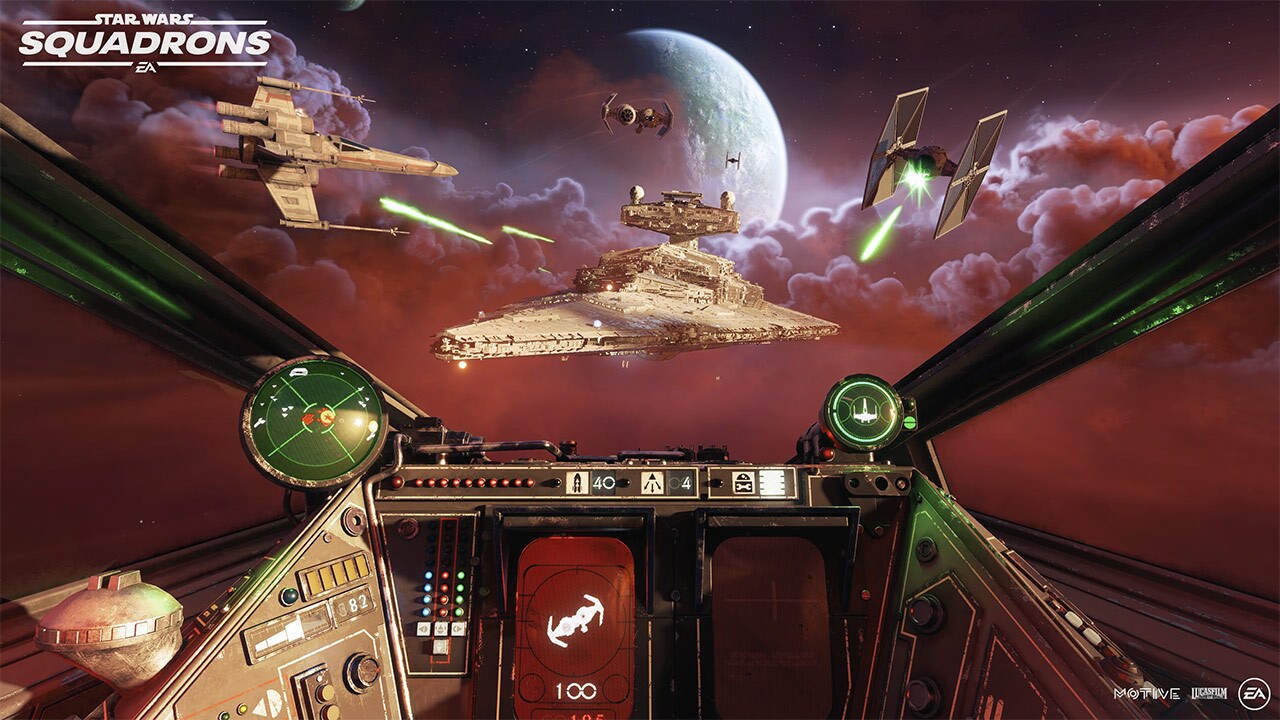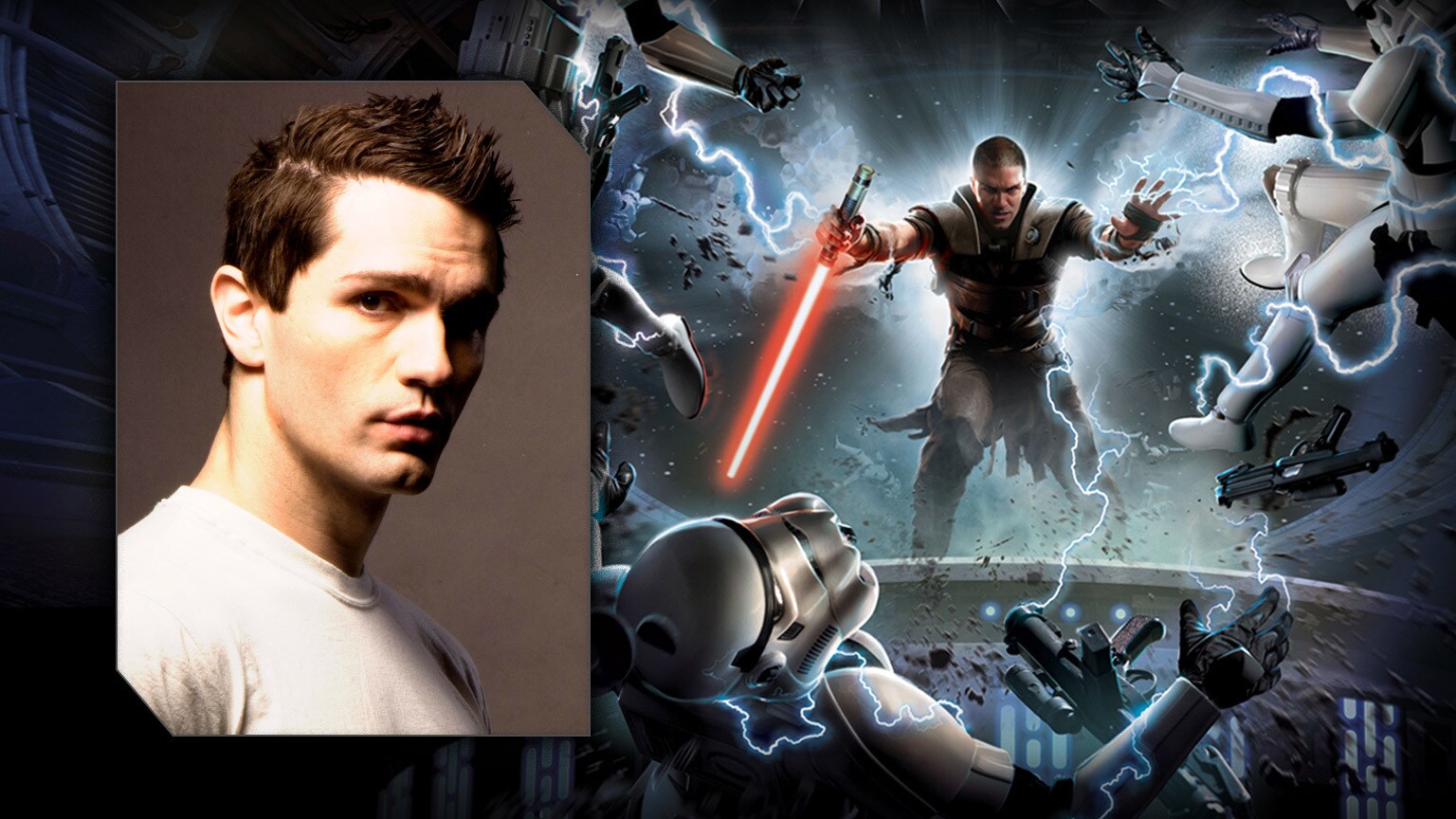If you’ve ever loved Star Wars, you’ve probably wondered what it would be like to fly an X-wing or TIE fighter, if not dreamed of it. Soon, that dream will come closer to reality: announced last month, Star Wars: Squadrons is coming October 2 for PlayStation 4, Xbox One, PC, and virtual reality. A brand-new flight game and the first of its kind for this generation of consoles, it will put players in the cockpits of X-wings, TIE fighters, and more iconic craft, bringing classic Star Wars dogfights to interactive life like never before in gaming. If a game could ever make you feel like you could take on the whole Empire (or New Republic) yourself, this is it. Following the reveal of Squadrons, StarWars.com was eager to uncover just a little more and caught up with developer Motive Studios' creative director Ian Frazier. Here’s everything we learned.
As Frazier explains, several titles from the past made an impact on the Squadrons team, with certain elements from each becoming springboards. “If I had to pick just one, I’d say X-Wing vs. TIE Fighter is the game that inspired us most, as the core competitive multiplayer experience of Squadrons and some of our specific mechanics find their roots in that game,” Frazier says. “Also, the dual-perspective single-player story of our game is influenced by how much we loved the faction-specific, pilot’s-eye stories in the campaigns of X-Wing and TIE Fighter, respectively. We wanted to capture some of each faction's unique perspective by alternating between two separate pilots over the course of the plot. Meanwhile, the pace, energy, and raw sense of fun in the Rogue Squadron series has been an inspiration for us on Squadrons, especially while building certain missions for the single-player story.”
Make no mistake -- Squadrons is not a nostalgia play. The developers wanted to pick up the baton (or proton torpedo) from classic games and move it forward. “From the beginning we wanted to draw inspiration from the past but not get stuck there,” Frazier says. “We’ve done a lot of things to make Squadrons’ gameplay really sing for a modern gamer, from a new power management system that’s built with a more player-friendly design than what we saw in the ‘90s, slick new aspects to the flight model like the ability to perform ‘drift’ turns, and of course everything that customization adds to the game. Being able to make your ship and your pilot your own, not only with cosmetics but with substantial changes to how your ship functions in combat, opens the door to a ton of gameplay depth.”
Frazier and the team narrowed the ship roster down to craft that would appeal to fans and serve what they wanted to achieve with gameplay. “Our eight playable ships are the X-wing, A-wing, Y-wing, and U-wing for the New Republic, and the TIE fighter, TIE interceptor, TIE bomber, and TIE reaper for the Empire,” Frazier says. “Each of these ships falls into a particular role during space combat: fighter, interceptor, bomber, and support, respectively.
“As for why these ships, it was a combination of trying to hit the most iconic and recognizable ships that fans are most excited to play, and trying to bring something new to the formula, which is where those support ships come in. Each starfighter brings its own distinct feel and flavor, with its own core stats. In general, the New Republic ships are more durable thanks to their shields. Meanwhile, the Imperial ships tend to be more agile and hit harder, so you get a nice difference in feel between factions as a baseline. Then, of course, you add to that the different options each has in terms of what components they can equip, and the strategic layer of the game starts to emerge. A Y-wing is the only ship in the game that can equip an ion turret, for instance, while the support ships have certain utility abilities that are unique to them.”
“They’re probably the support ships -- the U-wing and the TIE reaper,” he says. “These are ships that weren’t featured in the classic games (both were introduced in the film Rogue One), so it’s super cool to get to see the inside of them.” Looks aside, they’ll make for a richer experience -- so think twice before running for that X-wing or TIE fighter.
“From a gameplay standpoint they have a really unique a varied role to play, with several different ways to kit them out to be sort of a ‘healer’ who’s there to help your team, a disabler who ruins the enemy team’s day, a defender who helps hold down an area and protect a capital ship, or some mix of the above,” Frazier says. “That versatility makes them a lot of fun to play.”
As Frazier tells it, the goal was not to have Squadrons fit a standard definition of a type of game. Instead, it’s all about Star Wars fantasy fulfillment. “Squadrons is a first-person space combat game,” Frazier says. “Our game has several features built to create a sense of immersion and realism that many Star Wars fans have been craving -- the sort of thing that make you really feel like a pilot controlling a starfighter. At the same time, the experience is meant to be accessible for any player who has ever wanted to hop into an X-wing or TIE fighter.” Still, it does allow for a deeper experience than a typical shooter.
“Depending on what you’re looking for, we have options that will push your experience a bit closer to the ‘sim’ end of the spectrum or will keep it more accessible. Either way, we’re aiming for more of an immersive experience than an ‘arcade’ one. At the end of the day, our focus isn’t on checking the boxes of any particular genre -- our goal was simply to capture that core fantasy of being a Star Wars ace pilot and bringing that to life.”
Even just from the trailers, it’s easy to see that Squadrons is fast and gorgeous. The detail on the ships and their maneuverability, the explosions, the pilots’ expressions -- a Star Wars flight game has never looked better. That’s just one way that the tools powering modern gaming has lifted Squadrons to a new level. “All the classic games, though wonderful, are quite old now, so the level of visual and audio quality we’re able to deliver on with Squadrons is far, far beyond what was possible with those older titles, and I think it really helps players to immerse themselves in the game,” Frazier says. “As a simple example, our game features a multi-layered dynamic music system that allows John Williams’ incredible score to flow naturally back and forth over the course of a pitched Fleet Battle, letting players feel who’s winning or losing while fully immersed in the moment. Similarly, advancements in technology allow us to give players a pretty amazing opportunity: the entire game is playable end to end in VR, on both PC and PS4.”
Star Wars: Squadrons arrives October 2 for PlayStation 4, Xbox One, and PC, and is available for pre-order now.
For more on Star Wars: Squadrons, check out StarWars.com’s in-depth coverage:
- Explore the Star Wars: Squadrons game page
- Read the full Star Wars: Squadrons announce
- Go inside the making of the game with Ian Frazier, creative director at Motive, and Lucasfilm's Orion Kellogg
- Discover highlights from the Star Wars: Squadrons reveal trailer and gameplay trailer
- Buckle up and meet the characters of Star Wars: Squadrons in the StarWars.com Databank
Dan Brooks is Lucasfilm’s senior content strategist of online, the editor of StarWars.com, and a writer. He loves Star Wars, ELO, and the New York Rangers, Jets, and Yankees. Follow him on Twitter @dan_brooks where he rants about all these things.
Site tags: #StarWarsBlog



















